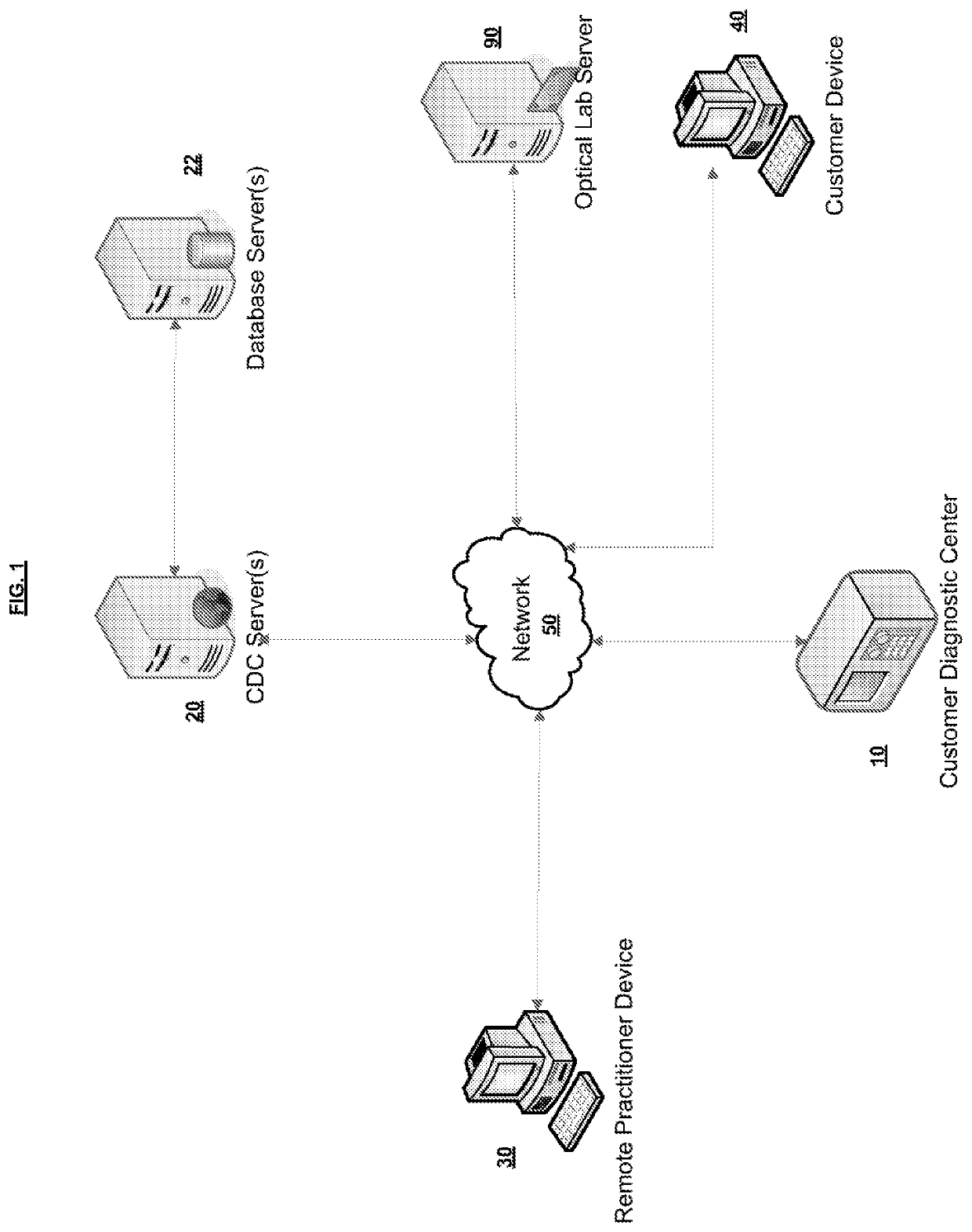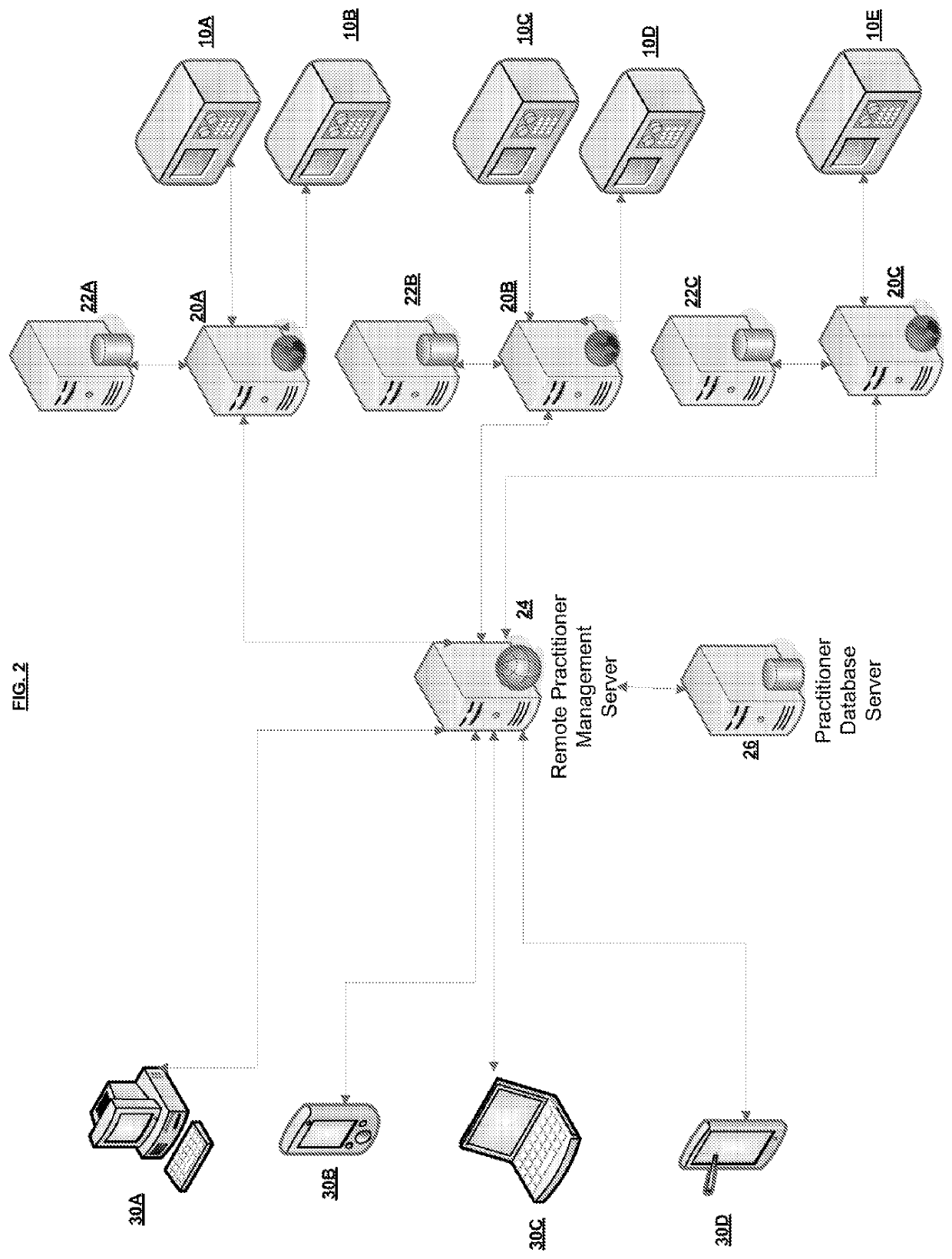Systems and methods for enabling customers to obtain vision and eye health examinations
a technology of eye health examination and system, applied in the field of optometry and ophthalmology and the performance of eye examination, can solve the problems of eye health examinations received by individuals who cannot meet the level of comprehensive eye examination, eye health examinations can be deteriorated continuously, and changes in vision can occur
- Summary
- Abstract
- Description
- Claims
- Application Information
AI Technical Summary
Benefits of technology
Problems solved by technology
Method used
Image
Examples
Embodiment Construction
[0031]In the following description, reference is made to the accompanying drawings that form a part hereof, and in which is shown by way of illustration specific embodiments in which the invention may be practiced. It is to be understood that other embodiments may be utilized and structural changes may be made without departing from the scope of the present invention.
[0032]It is well-known that eye health examinations and vision examinations provide many important benefits and, accordingly, virtually all highly-regarded associations and professionals throughout the field of eye and vision care strongly recommend that individuals receive such examinations and screenings on a regular and consistent basis. Nevertheless, many individuals fail to undergo eye health examinations and vision examinations at all, or only do sporadically or in response to an immediate medical issue or condition. In part, many individuals find it challenging to obtain regular examinations because of the signif...
PUM
 Login to View More
Login to View More Abstract
Description
Claims
Application Information
 Login to View More
Login to View More - R&D
- Intellectual Property
- Life Sciences
- Materials
- Tech Scout
- Unparalleled Data Quality
- Higher Quality Content
- 60% Fewer Hallucinations
Browse by: Latest US Patents, China's latest patents, Technical Efficacy Thesaurus, Application Domain, Technology Topic, Popular Technical Reports.
© 2025 PatSnap. All rights reserved.Legal|Privacy policy|Modern Slavery Act Transparency Statement|Sitemap|About US| Contact US: help@patsnap.com



